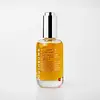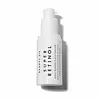What's inside
What's inside
 Key Ingredients
Key Ingredients

 Benefits
Benefits

 Concerns
Concerns

 Ingredients Side-by-side
Ingredients Side-by-side

Water
Skin ConditioningButylene Glycol
HumectantGlycerin
Humectant1,2-Hexanediol
Skin ConditioningCaprylic/Capric/Succinic Triglyceride
EmollientHamamelis Virginiana Water
AstringentAlthaea Officinalis Root Extract
Skin ConditioningAvena Sativa Kernel Extract
AbrasivePropanediol
SolventPentylene Glycol
Skin ConditioningCarbomer
Emulsion StabilisingHydrolyzed Rice Protein
Skin ConditioningCaprylyl Glycol
EmollientSalix Alba Bark Extract
AstringentEquisetum Arvense Extract
AstringentGlycyrrhiza Glabra Root Extract
BleachingHarpagophytum Procumbens Root Extract
Skin ConditioningCaprylic/Capric Triglyceride
MaskingPolyglutamic Acid
Skin ConditioningSodium Hydroxide
BufferingSodium Benzoate
MaskingCitric Acid
BufferingPotassium Sorbate
PreservativePhenethyl Alcohol
MaskingXanthan Gum
EmulsifyingGlyceryl Caprylate
EmollientBacillus Ferment
Skin ConditioningSodium Carrageenan
Emulsion StabilisingAlchemilla Vulgaris Extract
AstringentUndaria Pinnatifida Extract
Skin ConditioningPseudoalteromonas Ferment Extract
HumectantAcetyl Hexapeptide-1
Skin ConditioningMaris Sal
Skin ConditioningWater, Butylene Glycol, Glycerin, 1,2-Hexanediol, Caprylic/Capric/Succinic Triglyceride, Hamamelis Virginiana Water, Althaea Officinalis Root Extract, Avena Sativa Kernel Extract, Propanediol, Pentylene Glycol, Carbomer, Hydrolyzed Rice Protein, Caprylyl Glycol, Salix Alba Bark Extract, Equisetum Arvense Extract, Glycyrrhiza Glabra Root Extract, Harpagophytum Procumbens Root Extract, Caprylic/Capric Triglyceride, Polyglutamic Acid, Sodium Hydroxide, Sodium Benzoate, Citric Acid, Potassium Sorbate, Phenethyl Alcohol, Xanthan Gum, Glyceryl Caprylate, Bacillus Ferment, Sodium Carrageenan, Alchemilla Vulgaris Extract, Undaria Pinnatifida Extract, Pseudoalteromonas Ferment Extract, Acetyl Hexapeptide-1, Maris Sal
Water
Skin ConditioningGlycerin
HumectantCoco-Caprylate/Caprate
EmollientPropanediol
SolventIsodecyl Neopentanoate
EmollientDicaprylyl Carbonate
EmollientHydroxyethyl Acrylate/Sodium Acryloyldimethyl Taurate Copolymer
Emulsion StabilisingDimethicone/Vinyl Dimethicone Crosspolymer
Skin ConditioningDimethicone
EmollientGlyceryl Stearate
EmollientPhenoxyethanol
PreservativeSqualane
EmollientGlycine Soja Seed Extract
Skin ConditioningGlycine Soja Oil
EmollientPolysorbate 60
EmulsifyingChlorphenesin
AntimicrobialEthylhexylglycerin
Skin ConditioningPotassium Cetyl Phosphate
EmulsifyingSilica
AbrasiveDimethiconol
EmollientAcrylates/C10-30 Alkyl Acrylate Crosspolymer
Emulsion StabilisingSorbitan Isostearate
EmulsifyingDisodium EDTA
Butylene Glycol
HumectantPolyurethane Crosspolymer-1
Glucosyl Hesperidin
HumectantIsoceteth-10
EmulsifyingSodium Hydroxide
BufferingRetinol
Skin ConditioningSodium Hyaluronate
HumectantCaprylyl Glycol
EmollientPhenethyl Alcohol
MaskingPEG-8
HumectantTocopherol
AntioxidantGlyceryl Caprylate
EmollientPhenylpropanol
MaskingAscorbyl Palmitate
AntioxidantOpuntia Ficus-Indica Stem Extract
Skin ConditioningAscorbic Acid
AntioxidantCitric Acid
BufferingCI 19140
Cosmetic ColorantOpuntia Ficus-Indica Callus Culture Extract
AntioxidantWater, Glycerin, Coco-Caprylate/Caprate, Propanediol, Isodecyl Neopentanoate, Dicaprylyl Carbonate, Hydroxyethyl Acrylate/Sodium Acryloyldimethyl Taurate Copolymer, Dimethicone/Vinyl Dimethicone Crosspolymer, Dimethicone, Glyceryl Stearate, Phenoxyethanol, Squalane, Glycine Soja Seed Extract, Glycine Soja Oil, Polysorbate 60, Chlorphenesin, Ethylhexylglycerin, Potassium Cetyl Phosphate, Silica, Dimethiconol, Acrylates/C10-30 Alkyl Acrylate Crosspolymer, Sorbitan Isostearate, Disodium EDTA, Butylene Glycol, Polyurethane Crosspolymer-1, Glucosyl Hesperidin, Isoceteth-10, Sodium Hydroxide, Retinol, Sodium Hyaluronate, Caprylyl Glycol, Phenethyl Alcohol, PEG-8, Tocopherol, Glyceryl Caprylate, Phenylpropanol, Ascorbyl Palmitate, Opuntia Ficus-Indica Stem Extract, Ascorbic Acid, Citric Acid, CI 19140, Opuntia Ficus-Indica Callus Culture Extract
Ingredients Explained
These ingredients are found in both products.
Ingredients higher up in an ingredient list are typically present in a larger amount.
Butylene Glycol (or BG) is used within cosmetic products for a few different reasons:
Overall, Butylene Glycol is a safe and well-rounded ingredient that works well with other ingredients.
Though this ingredient works well with most skin types, some people with sensitive skin may experience a reaction such as allergic rashes, closed comedones, or itchiness.
Learn more about Butylene GlycolCaprylyl Glycol is a humectant and emollient, meaning it attracts and preserves moisture.
It is a common ingredient in many products, especially those designed to hydrate skin. The primary benefits are retaining moisture, skin softening, and promoting a healthy skin barrier.
Though Caprylyl Glycol is an alcohol derived from fatty acids, it is not the kind that can dry out skin.
This ingredient is also used as a preservative to extend the life of products. It has slight antimicrobial properties.
Learn more about Caprylyl GlycolCitric Acid is an alpha hydroxy acid (AHA) naturally found in citrus fruits like oranges, lemons, and limes.
Like other AHAs, citric acid can exfoliate skin by breaking down the bonds that hold dead skin cells together. This helps reveal smoother and brighter skin underneath.
However, this exfoliating effect only happens at high concentrations (20%) which can be hard to find in cosmetic products.
Due to this, citric acid is usually included in small amounts as a pH adjuster. This helps keep products slightly more acidic and compatible with skin's natural pH.
In skincare formulas, citric acid can:
While it can provide some skin benefits, research shows lactic acid and glycolic acid are generally more effective and less irritating exfoliants.
Most citric acid used in skincare today is made by fermenting sugars (usually from molasses). This synthetic version is identical to the natural citrus form but easier to stabilize and use in formulations.
Read more about some other popular AHA's here:
Learn more about Citric AcidGlycerin is already naturally found in your skin. It helps moisturize and protect your skin.
A study from 2016 found glycerin to be more effective as a humectant than AHAs and hyaluronic acid.
As a humectant, it helps the skin stay hydrated by pulling moisture to your skin. The low molecular weight of glycerin allows it to pull moisture into the deeper layers of your skin.
Hydrated skin improves your skin barrier; Your skin barrier helps protect against irritants and bacteria.
Glycerin has also been found to have antimicrobial and antiviral properties. Due to these properties, glycerin is often used in wound and burn treatments.
In cosmetics, glycerin is usually derived from plants such as soybean or palm. However, it can also be sourced from animals, such as tallow or animal fat.
This ingredient is organic, colorless, odorless, and non-toxic.
Glycerin is the name for this ingredient in American English. British English uses Glycerol/Glycerine.
Learn more about GlycerinGlyceryl Caprylate comes from glycerin and caprylic acid, a fatty acid from coconut. It has emollient and emulsifier properties.
As an emollient, it helps hydrate your skin. Emollients work by creating a barrier on your skin to trap moisture in, helping to keep your skin soft and smooth.
On the other hand, emulsifiers prevent ingredients (such as oil and water) from separating.
Learn more about Glyceryl CaprylatePhenethyl Alcohol is a colorless and aromatic alohol. It is naturally occuring in essential oils.
The scent of this ingredient is floral and often compared to rose.
Like other alcohols, this ingredient helps prevent the growth of bacteria. However, its main purpose is to impact a fragrance.
Learn more about Phenethyl AlcoholPropanediol is an all-star ingredient. It softens, hydrates, and smooths the skin.
It’s often used to:
Propanediol is not likely to cause sensitivity and considered safe to use. It is derived from corn or petroleum with a clear color and no scent.
Learn more about PropanediolSodium Hydroxide is also known as lye or caustic soda. It is used to adjust the pH of products; many ingredients require a specific pH to be effective.
In small amounts, sodium hydroxide is considered safe to use. However, large amounts may cause chemical burns due to its high alkaline.
Your skin has a natural pH and acid mantle. This acid mantle helps prevent harmful bacteria from breaking through. The acid mantle also helps keep your skin hydrated.
"Alkaline" refers to a high pH level. A low pH level would be considered acidic.
Learn more about Sodium HydroxideWater. It's the most common cosmetic ingredient of all. You'll usually see it at the top of ingredient lists, meaning that it makes up the largest part of the product.
So why is it so popular? Water most often acts as a solvent - this means that it helps dissolve other ingredients into the formulation.
You'll also recognize water as that liquid we all need to stay alive. If you see this, drink a glass of water. Stay hydrated!
Learn more about Water